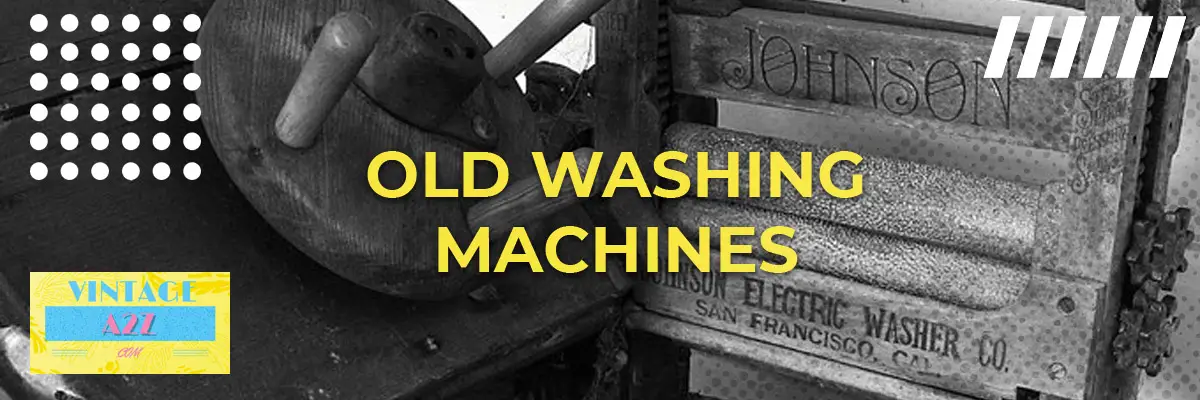Was the invention of washing machines the greatest innovation ever in history?
The invention of washing machines empowered women to join the workforce. It was one of the industrial revolution’s greatest inventions. Before washing machines, women had to spend hours washing clothes by hand, whereas with the introduction of washing machines, their time was freed up for other activities.
Today, the washing machine is one of the best technological wonders ever created that has made life easier. Some of its benefits include:
- Time: Hand washing clothes consumes a lot of time, so washing machines come in handy. It becomes easy to multitask a hectic lifestyle.
- Effort: The creation of washing machines has eliminated the physical strain of hand-washing and removing stains from dirty laundry.
- Cycles: Washing machine cycles depend on the garment type. The wash cycles of the washing machines can be adjusted, depending on how damaged the garment is and what material it is made of.
The history of washing machines
Washing machines are home appliances that were first created way back in 1767 (by Jacob Christian Schäffer) in Regensburg, Germany. Thirty years later, an American, Nathaniel Briggs, obtained the first washing machine patent. The first washing machine was a very basic piece of equipment made of wood with a manual spin-dryer.
A while later, the washing machine created by Thomas Bradford was introduced in 1860. It is considered to be more similar to the appliances we use today. Although according to some historians, the first washing machine was invented by American William Blackstone (and not Thomas Bradford) who made a washing machine for his wife in 1874 and later became the very first manufacturer of the appliance after it went on sale.
Washing machines were manual (hand-powered) until the end of the 1800s, and commercial machines ran on steam and belts. In 1908, that all changed with the invention of Thor, the first electric washing machine.
The first modern washing machines
The first drum washing machines emerged in 1905. They were still manual, but their tanks were made of steel, which allowed the inclusion of a coal burner.
The first electric washing machines were invented in 1920. The controls were still hand-operated, except for the turning mechanism that was electric.
The invention of automatic washing machines
In 1930, washing machines became automatic. Thermostats, timers, and pressure switches were included. From the 1980s, electric washing machines were made more advanced by making them reactive and more eco-friendly.
In 1980, James Dyson, a British inventor, invented the washing machine that played a great part in reducing washing time and yielding better results because, on both sides, it had two cylinders.
Automatic washing machines carry out functions with no manual interventions. They usually include:
- Adjustment of parameters such as rate, water levels, and spinning
- Water and energy saving features
- Different cycles such as wool, color, whites, and synthetics
- Weight sensors
- Started up by a programmer
- When the tank is full, a solenoid valve and a pressure switch stop the water supply.
- The temperature is controlled by a thermostat
- The operating time is controlled by a timer.
Timeline of washing machine inventions
Mechanical Washing Machines
1767
- Jacob Christian Schäffer, a German, invented the first mechanical washing machine.
- On March 31st of the same year, Nathaniel Briggs, an American, filed the first-ever washing machine patent.
1830
- The first-ever mechanical washing machines appeared in England.
1843
- The first roller machine was also invented by Nathaniel Briggs.
1851
- The first drum washing machine patent was filed by James King. However, this model was still mechanical and a crank had to be used to activate its engine. Nevertheless, physical exertion was greatly reduced.
1861
- Another washing machine made by James King introduced a wringer facilitated washing.
1870
- François Proust, a Frenchman, created a double boiler and a more hygienic prototype: the linen was sterilized by the steam. Its main drawback was that not all materials could withstand such treatment.
1898
- Flandria, a French manufacturer, launched the “Barboteuse.”These hand-operated washing machines made washing from home more comfortable than doing it at the laundromat.
Electric Washing Machines
1901
- Alva John Fisher, an American engineer, is considered to be the first inventor of electric washing machines. But before him, a patent was filed. However, the name of the inventor remains a mystery to date. Metal tanks replaced the wooden ones.
1907
- Barlow and Seeling Manufacturing, which was founded by Joe Barlow and John Seeling, was recognized for how durable their professional washing machines were.
1911
- Barlow and Seeling manufacturing made some improvements to their electric washing machines, making them more safe and efficient then the former model.
1915
- The Speed Queen, the very first multidirectional wringer, was introduced to the market.
1920
- Electric motors, which were faster for spinning, but slower for washing, became two-speed and waterproof.
1927
- The birth of the first washing machine that had a spinning function. In the United States, for these sales machines reached 913,000 units.
1929
- The first machines with spinning function incorporated reached the French market.
1937
- American John Chamberlain, while working for the BAC (Bendix Aviation Corporation), designed a multifunctional washing machine that could wash garments, rinse and then spin them in just one cycle.
1941
- In support of the world war effort, professional washing machine production was interrupted by Speed Queens. However, the USA allowed manufacturers to continue their development and research on machine automation.
The 1950s and 60s
- Automatic machines were very expensive and only a few households could afford them at first. The number of laundromats grew across Europe and US cities in the 50s and 60s.
The 1980s
- From the 1980s, the washing machines contained microelectronic components and therefore they consumed less electricity and water. This was an attempt to save money and preserve the environment.
Wrapping up
A lot of technological advances have been made over the years, but few were as remarkable as the invention of the domestic washing machine, which radically changed many families’ lives.
Unlike today’s machines, washing machines back then were built to last. Their performance, build quality, and longevity gave them a long life span.

